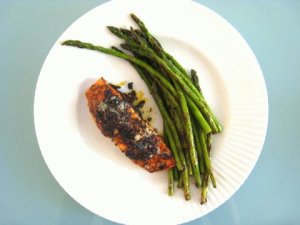 Since I last wrote in this blog, a lot has happened. My husband and I moved to the city and renovated a very old craftsman bungalow. It is a beautiful old home with lots of character, complete with a big yard in the back. I used to live on a hill and longed for a garden. I wanted so much to run outside and pluck some plump and delicious produce from my well tended garden, but the hill prevented these dreams. This was no minor, politely rolling hill, but a steep grade that hosted daring children in ice and snow storms. Jon rolled down the hill and lost his phone one year while trying to move the sprinkler. This hill was not going to be the home of a garden.
Since I last wrote in this blog, a lot has happened. My husband and I moved to the city and renovated a very old craftsman bungalow. It is a beautiful old home with lots of character, complete with a big yard in the back. I used to live on a hill and longed for a garden. I wanted so much to run outside and pluck some plump and delicious produce from my well tended garden, but the hill prevented these dreams. This was no minor, politely rolling hill, but a steep grade that hosted daring children in ice and snow storms. Jon rolled down the hill and lost his phone one year while trying to move the sprinkler. This hill was not going to be the home of a garden.
Now I have a wonderfully large and somewhat flat yard, and I have many dreams for my future garden. There were some time constraints surrounding the development of a summer garden, so for this season Jon and I dug up some grass in the sunniest part of our yard, mixed in some decent soil, and stuck some vegetable plants in the ground. Finally, FINALLY, we were working on our garden! Now, my idealistic visions were slightly interrupted by the fact that our soil was peppered with things like giant stones, bricks, axe heads, railroad ties, bullets, glass, and other similar items. There’s nothing like digging your hands into God’s green earth and pulling out a six inch long nail. Furthermore, giant wisteria vines, some over six inches in diameter, are snaking their way through our entire yard, creating an underground subway system of inexplicable vine growth. These had to be hacked through mercilessly. Did I mention that the previous owner of our home was a hoarder and that our yard was filled with multiple cars and other piles of mystery items? Couple this with the fact that my neighborhood is affectionately dubbed “the hood” for all of the reasons that you may imagine, and perhaps you can now understand the interesting components of my native backyard soil.
Nonetheless, Jon and I planted, and we have been carefully tending and watching our little garden. I have been imagining all of the things that I will make with the tomatoes from my ten or so plants – roasted tomatoes, tomato pies, tomato sauces, salsas and salads. I have been envisioning future appetizers of squash blossoms stuffed with ricotta and herbs and fried lightly, eaten as soon as they’re cool enough while standing at the stove, and pizzas delicately adorned with the bright golden blossoms spread out against the backdrop of my freshly made tomato sauce. Alas, this dream is still out of my reach. There is a tree at the edge of my property that is determined to shade my entire yard with its low hanging, intrusive branches. At the pace my garden is growing, I will have tomatoes in 2015. Meanwhile, my friend Becky experimented with a new, mutant soil formulation that is growing mutant vegetables. Her plants are freakishly large and robust; the fruit of these vines astoundingly large and healthy. You could fan someone with her squash blossoms. The vegetables that they planted in the regular soil and manure mixture remain relatively normal, growing at a polite but steady pace. The mutant soil is producing wild plants with giant fruit. It is with these superplant squash blossoms that I made the delicious pizza below.
This is a wonderful early summer pizza, redolent with floral notes and a brightness that is punctuated with oregano, marjoram and lemon zest. This is not my usual flavor profile; you won’t get punched in the face with garlic or lemon. There is no meat on this pizza. Instead, it is a beautiful little work of art, with creamy ricotta and flavors that are light enough to make up for the fact that when you eat this pizza, a lot of it will end up on your hands and cheeks. It is as messy as it is beautiful and delicious. When I made it, I imagined that I was using my own tomato sauce and squash blossoms. No matter – I look forward to my fall garden when I use the x-man soil that Becky has been using, complete with butter nut squashes the size of guitars and onions the size of boulders…
Squash Blossom Pizza
- Pizza dough (I used good quality store bought; I have not mastered the elusive art of dough making)
- One small can of unsalted tomato sauce (future recipes for homemade tomato sauce to appear when I have my tomatoes in 2015)
- One clove of garlic, gently smashed
- One splash of red wine, if you have it
- A handful of squash blossoms, at least six to eight depending on size
- About one tbsp each of fresh, chopped oregano and marjoram (don’t skip this!)
- About ¾ cup of part skim ricotta cheese (or use full fat but definitely NOT non-fat)
- About 1 tsp lemon zest
- Olive oil, kosher salt, black pepper, red pepper flakes
- Preheat your oven, and a pizza stone if you have it, to at least 450 (or even 500) degrees.
- While the oven is heating and when your dough is almost done rising, pour a small can of tomato sauce into a small sauce pan, add a generous pinch of kosher salt, one smashed garlic clove and a splash of red wine to the pan. Bring to a simmer and stir a few times, and remove from heat when nicely warmed through.
- Let the dough rise for at least an hour, flour your work surface, and do your best to stretch it out to pizza size, taking care to fill any holes that develop in the middle of the dough. I try to stretch the dough gently with my hands instead of rolling out with a rolling pin, since the Italians will disdain you for using a rolling pin and they are the ones who invented pizza. Don’t worry about the shape of your pizza; perfectly round is perfectly boring. Putting the dough on parchment paper will assist you with transferring it to the stone or pan for the oven. The parchment paper can survive the heat of the oven and still allow the bottom of the pizza to crisp nicely.
- Lightly dress the pizza dough with the tomato sauce, spreading gently with the back of a ladle. It is not necessary to drown the dough with the sauce.
- Spread the squash blossoms gently onto the pizza dough in a sunburst or sunflower shape. Brush them as well as the edges of the crust with a little olive oil. Scatter the pizza lightly with some red pepper flakes for a punctuation of heat.
- Place the pizza in the oven and bake for about eight minutes, or until the sides of the crust are nicely browned and puffy.
- While the pizza is in the oven, mix the ricotta cheese with some salt, pepper and the lemon zest. Form the ricotta into little caneles and set aside. I’m sure you can find a Youtube showing how to do this; if you’re not into the caneles, be prepared to schmear the cheese on the pizza in generous dollops.
- When the pizza is done, place the caneles between the squash blossoms, evenly in a circle around the pizza. Scatter the pizza with the chopped herbs and drizzle with good quality olive oil.
- Eat this pizza and dream about the ways in which digging in the soil and eating from our own “land” connects us with something good and true and ancient.
Kerri and Alyssa; thank you for inspiring me to start my blog again. I hope you enjoy.
Don’t skip ANY of the ingredients; in a recipe this light and simple, they all add a necessary component to the overall taste and flavor. Omitting any of them would take away from the harmonious tastes.

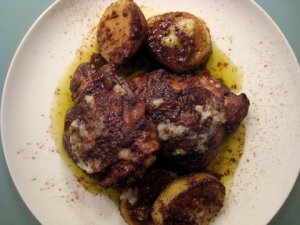


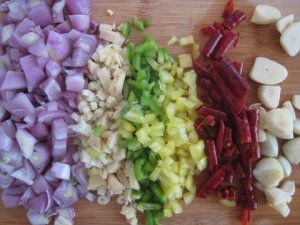


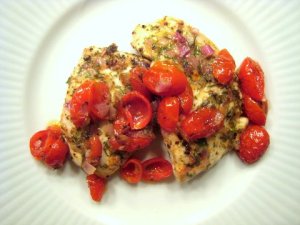
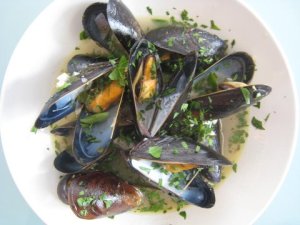
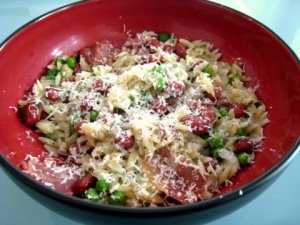
 Boy howdy, I’ve been eating some good lunches this week! I mean, they must be good to make me say things like, “boy howdy.” Hot damn, even! My knack for saving things in the freezer in the manner of eighty year old grannies combined with my need to use up any leftover ingredients manifested themselves today into the best eggwich that I’ve ever eaten. Ever. An absolute work of impromptu eggwich art. A sandwich so good as to inspire a spontaneous and uncharacteristic “boy howdy” must be shared.
Boy howdy, I’ve been eating some good lunches this week! I mean, they must be good to make me say things like, “boy howdy.” Hot damn, even! My knack for saving things in the freezer in the manner of eighty year old grannies combined with my need to use up any leftover ingredients manifested themselves today into the best eggwich that I’ve ever eaten. Ever. An absolute work of impromptu eggwich art. A sandwich so good as to inspire a spontaneous and uncharacteristic “boy howdy” must be shared. 